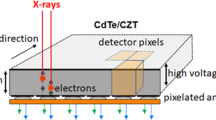Abstract
Projection microradiographs were made at various initial magnifications of 100 μ-ground sections of bone embedded in polymethyl methacrylate. The microradiographs were produced by using X-rays of different wavelengths. It was found that at certain radiographic magnifications the edges of objects, normally transparent to X-rays, became highly radiopaque. It was also found that the width of this opaque edge varied with the wavelength of the imaging radiation and with the amount of initial radiographic magnification, the latter being greatest at an initial enlargement of two. It is concluded that this edge effect is the result of Fresnel diffraction of the penetrating X-rays, used for the production of microradiographs. The relevance of these observations to the assessment of bone activity from microradiographs is discussed.
Résumé
Des microradiographies par projection sont réalisées à des grossissements initiaux différents, à partir de coupes par usure d'os de 100 microns d'épaisseur, après inclusion dans du méthacrylate de polyméthyle. Les microradiographies sont obtenues en utilisant des rayons X, de diverses longueurs d'onde. A certains grossissements radiographiques, les bords des objets étudiés, normalement transparents aux rayons X, deviennent très radio-opaques. La largeur du bord opaque varie avec la longueur d'onde de la radiation et le grossissement radiographique initial, ce dernier agissant au maximum avec un agrandissement initial de deux fois. Il semble donc que l'effet observé en bordure soit provoqué par un phénomène de diffraction de Fresnel du rayonnement X incident. Les incidences de cet effet sur les microradiographies de tissue osseux sont envisagées.
Zusammenfassung
Es wurden Projektionsmikroradiogramme bei verschiedenen Anfangsvergrößerungen von in Polymethyl-Methacrylat eingebetteten, 100 μ dicken Knochenschliffen ausgeführt. Die Mikroradiogramme wurden durch Verwendung von Röntgenstrahlen verschiedener Wellenlängen erhalten. Es wurde festgestellt, daß bei bestimmten radiographischen Vergrößerungen die Ränder von Gegenständen, welche normalerweise für Röntgenstrahlen durchlässig sind, stark opak wurden. Es wurde ebenfalls festgestellt, daß die Breite dieses opaken Randes je nach Wellenlänge der aufnehmenden Röntgenstrahlen und je nach Höhe der Anfangsvergrößerung der Aufnahme variierte. Der breiteste Rand wurde bei einer zweifachen Anfangsvergrößerung festgestellt. Die Autoren kommen zum Schluß, daß dieser Randeffekt das Ergebnis einer Fresnel-Diffraktion der eindringenden Röntgenstrahlen ist, welche für die Herstellung von Mikroradiogrammen verwendet werden. Die Bedeutung dieser Beobachtungen für die Einschätzung der Knochenaktivität mittels Mikroradiogrammen wird diskutiert.
Similar content being viewed by others
References
Amprino, R., Engström, A.: Studies on X-ray absorption and diffraction of bone tissue. Acta anat. (Basel)15, 1–22 (1952).
Baez, A. V., El-sum, H.: Effect of finite source size, radiation bandwidth and object transmission by reconstructed wavefronts. In: X-ray microscopy and microradiography (Cosslett, V. E., A. Engström, and H. H. Pattee, eds.). New York: Academic Press 1957.
Boyde, A., Hobdell, M. H.: Scanning electron microscopy of lamellar bone. Z. Zellforsch.93, 213–231 (1969).
Clark, G. L.: Medical, biological and industrial applications of monochromatic radiography and microradiography. Radiol.49, 483–495 (1947).
Cosslett, V. E.: X-ray microscopy. Rep. Progr. Physics.28, 381–409 (1965).
— X-ray microscopy. London: Cambridge University Press 1960.
Ely, R. V.: A fine focus X-ray tube with turret window and rotatable target. In: X-ray microscopy and microradiography (Cosslett, V. E., A. Engstrom, and H. H. Pattee, eds.). New York: Academic Press 1957.
Engström, A.: Quantitative micro and histochemical analysis of roentgen absorption spectrography. Acta radiol. (Stockh.), Suppl. 63 (1946).
Hobdell, M. H., Boyde, A.: Microradiography and scanning electron microscopy of bone sections. Z. Zellforsch.94, 487–494 (1969).
Jenkins, F. A., White, H. E.: Fundamentals of optics, 2nd ed., p. 347–374. London: McGraw Hill 1953.
Jowsey, J., Kelly, P., Riggs, L. R., Bianco, A. J., Scholz, D. A., Gershon-Cohen, J.: Quantitative microradiographic studies of normal and osteoporotic bone. J. Bone Jt Surg.47a, 785–807 (1965).
Mjör, I. A.: The bone matrix adjacent to lacunae and canaliculi. Anat. Rec.144, 377–379 (1962).
—, Jowsey, J., Stewart, L.: Quantitative microradiography of bone tissue. In: X-ray microscopy and microanalysis (Engström, A., V. E. Cosslett, and H. H. Pattee, eds.). Amsterdam: Elsevier 1960.
Author information
Authors and Affiliations
Rights and permissions
About this article
Cite this article
Hobdell, M.H., Braden, M. An investigation into some diffraction effects observed in microradiographic images of bone sections. Calc. Tis Res. 7, 1–11 (1971). https://doi.org/10.1007/BF02062588
Received:
Accepted:
Issue Date:
DOI: https://doi.org/10.1007/BF02062588




